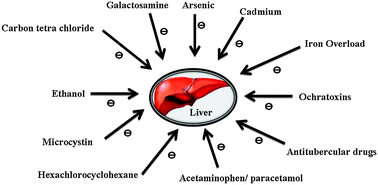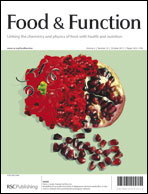Hepatoprotective properties of the Indian gooseberry (Emblica officinalis Gaertn): a review
Abstract
Liver diseases characterized by inflammation or tissue damage affect the optimal functioning and increase the morbidity and mortality of the affected individual. Liver diseases are a largely neglected health issue and recent reports indicate that they affect over 10% of the world population, with the highest burden in low and middle income countries that have minimal medical resources. To complicate matters the currently available pharmacological therapies are not optimal and when used for extended periods of time impart systemic toxicity. Diet can modify pathophysiological processes, including those of hepatotoxins, and studies have shown that some dietary constituents can afford heptoprotection. Emblica officinalis Gaertn or Phyllanthus emblica Linn, commonly known as the Indian gooseberry in English or amla in Hindi, is one of the most important medicinal and dietary plants in the Indian subcontinent. The fruits are of dietary and medicinal use and have wide applications in both traditional and folk systems of medicine. Scientific studies have shown amla to be effective in preventing/ameliorating the toxic effects of hepatotoxic agents like ethanol, paracetamol, carbon tetrachloride, heavy metals, ochratoxins, hexachlorocyclohexane, antitubercular drugs and hepatotoxicity resulting from iron overload. Amla is also reported to impart beneficial effects on liver function and to mitigate hyperlipidemia and metabolic syndrome. Amla possesses protective effects against chemical-induced hepatocarcinogenesis in animal models of study. Additionally, the phytochemicals quercetin, gallic acid, corilagin and ellagic acid are also reported to protect against the cytotoxic effects of paracetamol, microcystins, galactosamine and lipopolysaccharide. The hepatoprotective actions of amla appear to be mediated by its free radical scavenging, antioxidant, anti-inflammatory and modulation of the xenobiotic detoxification process and lipid metabolism.


 Please wait while we load your content...
Please wait while we load your content...